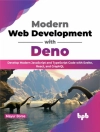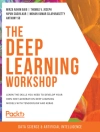This book constitutes the proceedings of the 6th International IFIP Working Conference on Enterprise Interoperability, IWEI 2015, held in Nîmes, France, in May 2015. The event was organized by the IFIP Working Group 5.8 on Enterprise Interoperability in co-operation with INTEROP-VLab and PGSO (Pole Grand Sud Ouest) from INTEROP-Vlab. The theme for IWEI 2015 was “From Enterprise Interoperability Modelling and Analysis to Enterprise Interoperability Engineering.”The nine full, four short, and two industrial papers presented in this volume were carefully selected from 20 submissions. The selection was based on a thorough review process, in which each paper was reviewed by at least three experts in the field. The papers are representative of the current research activities in the area of enterprise interoperability. They cover a wide spectrum of enterprise interoperability issues, including foundational theories, frameworks, architectures, methods and guidelines, and applications and case studies.
Inhaltsverzeichnis
Semantic Interoperability in Astrophysics for Workflows Extraction from Heterogeneous Services.- A General Model Transformation Methodology to Serve Enterprise Interoperability Data Sharing Problem.- An Ontology for Interoperability: Modeling of Composite Services in the Smart Home Environment.- Validation and Verification of Interoperability Requirements.- Interoperability as a Key Concept for the Control and Evolution of the System of Systems (So S).- Towards an Agile and Collaborative Platform for Managing Supply Chain Uncertainties.- Towards a Sustainable Implementation of Interoperability Solutions: Bridging the Gap Between Interoperability Requirements and Solutions.- Introducing a Socio-Technical Perspective on Business Processes into Enterprise Interoperability Frameworks.- Humans in the Enterprise Interoperability Ecosystem.- Multi-agent Product Life Cycle Environment. Interoperability Issues.- Linked Data for Transaction Based Enterprise Interoperability.- Interoperability Architecture for Electric Mobility.- Model Based Enterprise Modeling for Testing PLM Interoperability in Dynamic Manufacturing Network.- PLM Standards Modelling for Enterprise Interoperability: A Manufacturing Case Study for ERP and MES Systems Integration Based on ISA-95.- An Interface Pattern Model for Supporting Design of Natively Interoperable Systems.












